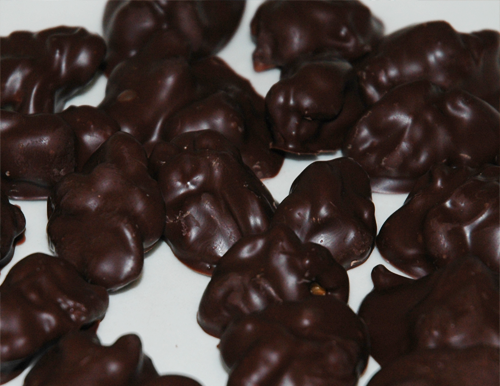Have you ever tried to coat something in chocolate, like strawberries, nuts, bananas, homemade truffles, etc. only to find that what looked pretty and shiny directly after it was dipped, while the chocolate was still wet, ended up being rather dull and fragile once the chocolate had solidified? Speaking of solidifying, it probably seemed like that darn chocolate would never harden if you didn’t put it into the refrigerator or freezer didn’t it? Well the reason you had this trouble is because you did not temper the chocolate.
Tempering chocolate can seem like a complex and downright mysterious thing and for that reason most people tend to avoid the issue. Luckily, the truth is, tempering chocolate is not all that difficult in practice. It is simply a matter of heating the chocolate to a certain temperature, cooling it to a certain temperature, and then heating it again to a certain temperature. The scariest part of this process to most people is the precision required. How on Earth are you supposed to keep track of exact temperatures? How difficult is it to hit these temperatures without screwing it all up? This job does require one piece of special equipment. A thermometer. Once you have one, the tempering process really is quite easy. You do have to hit certain temperatures (usually give or take a degree) but this, you will find, is easier than you think. In fact if you temper chocolate a lot you can develop a feel for the the process and can even learn to do it without a thermometer. Until then though, go get a thermometer. Most people opt for a candy thermometer and this would be my suggestion as they would typically be pretty accurate, but I actually use a digital meat thermometer, which is not all that accurate, and I do just fine.
In this article I will describe the process of tempering, and explain why and how it works. While you don’t really need to know all of this information to successfully temper chocolate, this information will help you to understand why it is important and when something goes wrong, why it goes wrong. Do not let this information overload scare you. If you do not care to know all the technical mumbo jumbo about tempering you can just try following step by step instructions in a tempering recipe (like this one for dark chocolate covered blueberries).
Friday
Oct 12, 2012

